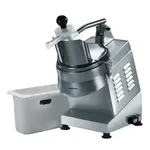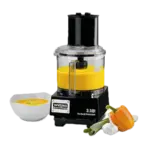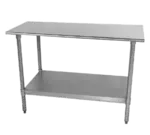
Commercial Kitchen Organization Ideas in 5 Easy Steps
Commercial kitchens are not the place to be unorganized. Depending on the size of the kitchen, the staff, and the productivity, the kitchen can be a rather hectic area. If you are unorganized, this can lead to poor quality food, unhappy customers, and even injured workers.
Especially in the age of coronavirus, customers are extra mindful of the cleanliness and organization of the environment in which their food is prepared. If you are asking yourself how to organize your commercial kitchen, then you’ll want to keep the following tips in mind.
How to Organize Your Commercial Kitchen in 5 Easy Steps
Learning how to organize your commercial kitchen is an essential step in running a safe and successful business. Kitchen organization reduces the risk of accidents within the workplace as well as the number of mishaps with your customer’s orders.
If you are struggling with or simply looking for professional kitchen organization ideas to help you organize your restaurant kitchen space, then you’ll want to keep the following tips in mind.
Keep Small Kitchen Appliances in Reach
Face it, there just never seems to be enough space in a commercial kitchen for everything you need. Well, to be fair, that seems to be the case for most kitchens, but that’s beside the point. When discussing how to organize your commercial kitchen, you want to make the most of your storage space, and one way to do that is by hanging some of your most frequently used items within easy reach.
These can be pots and pans or cooking utensils that are used regularly. Hanging these items near your cooking space can help you cut down on your prep time because everything is within easy reach. Hanging them also helps to open up valuable shelf storage space within your storage units.
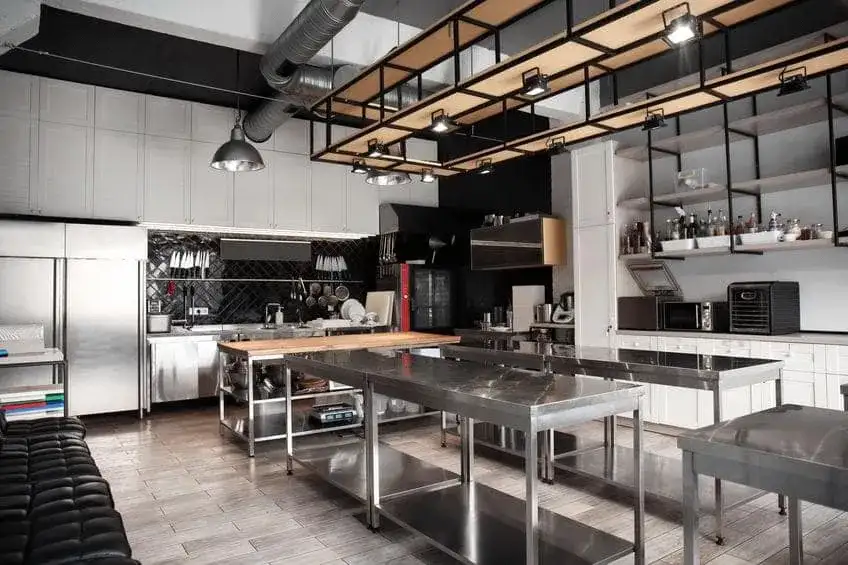
Master Kitchen Zones Organization
When it comes to storing your appliances and utensils, one of the easiest ways to stay organized is to designate zones within your kitchen. This means having designated areas for your smallwares, commercial food processors and mixers, and so on.
Not only does designating zones help keep your equipment organized, but it can also help keep your staff focused on their designated area, which, in turn, helps to maintain an orderly kitchen. Many larger restaurants have designated stations for fish, pastries, and pasta, and while you may not have that luxury, you can still set up designated spaces for your work team to streamline your day-to-day process.
Ditch Closed Storage Units for Items That Don’t Need to Be Refrigerated or Frozen
Speaking of storage units, you’ll want to completely ditch your old closed storage units in favor of open shelving. Again, not only does this help cut down on your time spent searching for items, but it helps you to easily identify what goes where during your end-of-day cleanup process.
Often referred to as metro racks, these simplistic metal storage units make storing your stock and supplies simply by keeping everything out in the open. With adjustable shelving, you can easily customize these types of storage units to suit your every need with little to no difficulty, which is especially crucial for smaller commercial kitchens where maximizing space is critical.
While you can easily store many of your prep materials in these open storage units, you obviously can’t store your refrigerated or frozen products on these open racks. Now, that doesn’t mean you have to settle for a traditional cramped refrigeration unit simply. Utilizing walk-in refrigeration units often allows you plenty of space to organize your refrigerated items in a similar way to your non-refrigerated items.
Use Shelving & Racks
Employees in a commercial kitchen understand how easy it is for their workspace to become disorganized. Help maximize employee convenience by installing shelving and racks that can declutter and better organize your establishment. They are necessary for storing food, cooking tools, washing towels, and storing other kitchen equipment. Fixed shelves, stand-alone units, moveable racks, and under-table storage are all examples of equipment that can contribute to:
- Simpler accessibility
- Less waste
- Appropriate spacing
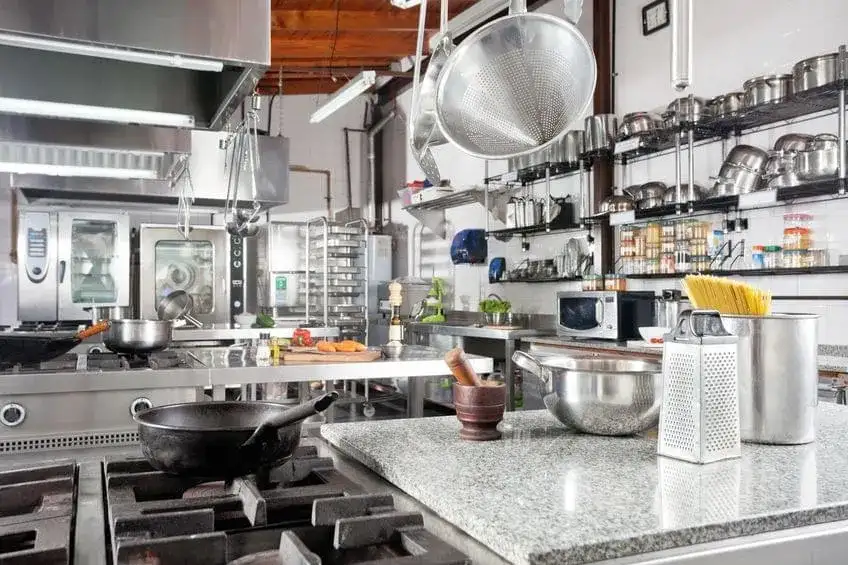
Keep your Commercial Refrigerator Organized - Use the “First In, First Out” Method
If you’re new to the restaurant scene, then you may not have heard of the FIFO acronym. Simply put, the FIFO acronym stands for first in, first out. This is a great commercial kitchen storage method for not only your refrigerated and frozen items but your other pantry items as well.
In food preparation, it is vital to organize your pantry and refrigeration units because you are responsible for your customer and staff’s wellbeing. All of your food prep material has an expiration date, and even if the item has a shelf life of two years, you want to make sure that you are using it promptly to prevent any contamination, which could lead to illness should a customer or staff member ingest it.
The first in, first out method helps to prevent this by helping you organize your food storage. It's not a difficult method to implement, either. In most commercial kitchens, if an item is placed towards the back of the refrigerator, then it was purchased first. As more material is added to the unit, it gets placed in front of the original item. Instead of grabbing things from the front of your storage, you want to grab them from the back.
The key to this method is to always put the item back in its place after you’ve used it, or else you run the risk of throwing off your expiration orders.
Label All Your Kitchen Storage Containers & Pantries
If you aren’t the best at remembering what’s what or what expires when then, this tip is for you. The best tip on how to organize your commercial kitchen is to label everything you put in your refrigerator, freezer, and pantry.
The best way for you to do this is to label each item as to what it is when you purchased or opened it, and when it expires. This makes it easy to identify all the vital information when you are trying to move quickly and keeps your organized even if you’ve not placed everything back in its correct spot.
Dry goods like rice, sugar, and flour can be safely stored in bulk inside ingredient bins. This is an easy and convenient solution that not only keeps your pantry organized, but also prevents the ingredients from being saturated or contaminated.
These bins are available in a wide range of capacities with many able to hold more than a hundred pounds of dry goods at a time. The large-capacity units generally have casters that allow you to move the products effortlessly where needed. Units with no casters can be placed on shelves for easy access.
The ingredient bins can be easily labeled as well so you can instantly identify which is which.
